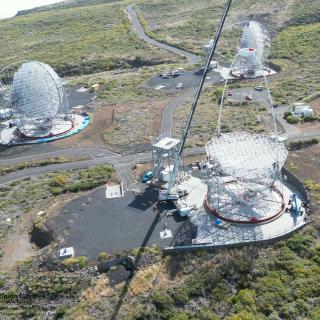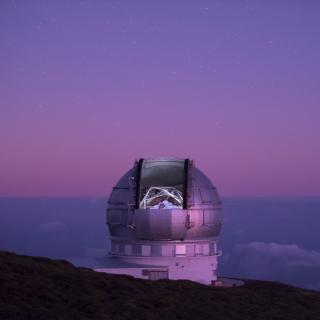The popular magazine Astronomy, one of the most widely read in the English-speaking world gives second place in its annual discovery league table an investigation led by the IAC, first place going to the discovery of the Higgs boson. More than a thousand years after the event occurred, the research team has determined that it originated in the collision and subsequent fusion of two white dwarf stars.
Last September, the journal Nature dedicated its cover to a Spanish investigation led by Jonay González Hernández, a researcher at the Instituto de Astrofísica de Canarias (IAC). The investigation had found an explanation for the brightest event in the history of humanity: supernova SN1006, which exploded in the year 1006 and was observed by various civilizations in different parts of the globe. The conclusion of this work, which suggests that the supernova originated in the fusion of two white dwarf stars, was chosen as the second-most important astrophysical find of last year by Astronomy magazine, the most widely read astronomy magazine in the English-speaking world.
The discovery of the Higgs boson heads Astronomy’s league table, in which is also found – in sixth place – studies on Vesta, the second-biggest asteroid in the Solar System and, according to data provided by NASA’s Dawn probe, the sole surviving relic of the only protoplanet to survive since the origin of our planetary system. Other highlights in the list include dwarf galaxies, black holes, the wanderings of the Curiosity Mars probe and the latest findings in the field of exoplanets.
The study was led by IAC astrophysicist Jonay González and centres on an event which occurred between 30 May and 1 June, 1006, and which, according to Chinese astronomers, was visible on Earth for three years. An Egyptian astronomer provided the most precise known description: a phenomenon three times brighter than Venus and emitting an amount of light equivalent to a quarter of a full moon.
As González explains, the team, which included participants from the University of Barcelona and the Superior Council for Scientific Research (Consejo Superior de Investigaciones Científicas, CSIC), carried out an exhaustive exploration of the part of the sky where the event occurred and found no trace of a companion star. ‘SN1006 leads us to think that this event was produced by the collision and subsequent fusion of two white dwarf stars of similar mass,’ the IAC research indicates.
How did the team reach this deduction? What the astronomers saw in 1006 was a supernova, a stellar explosion that occurs in the final stages of a star’s life, when it releases a great deal of energy and ejects huge quantities of matter at great velocity into the interstellar medium. SN1006 belongs to a class of supernovae produced by binary systems, which comprise two stars bound together by the force of gravity. Such systems can be formed by a white dwarf and a ‘normal’ star that dumps matter on to its companion until the latter reaches a critical mass 1.4 times that of the Sun (the so-called Chandrasekhar limit). The white dwarf gradually increases its density and temperature until critical mass is reached, when it explodes as a supernova. Another option is for the system to be composed of two white dwarfs that end up fusing together to produce a supernova.
The definitive clue that led the researchers to conclude that this particular case was the result of the fusion of two white dwarfs was that this supernova, some 7000 light years distant, has no companion to the progenitor white dwarf. The explosion produced by the fusion of two white dwarfs has in fact left no trace at all except for the supernova remnant itself, which can still be studied so many centuries after the event, making SN1006 one of only four historical supernovae of this type to have occurred in the Milky Way.
Contact: Jonay González (telephone: +34 922605751, electronic mail: jonay [at] iac.es (jonay[at]iac[dot]es)


